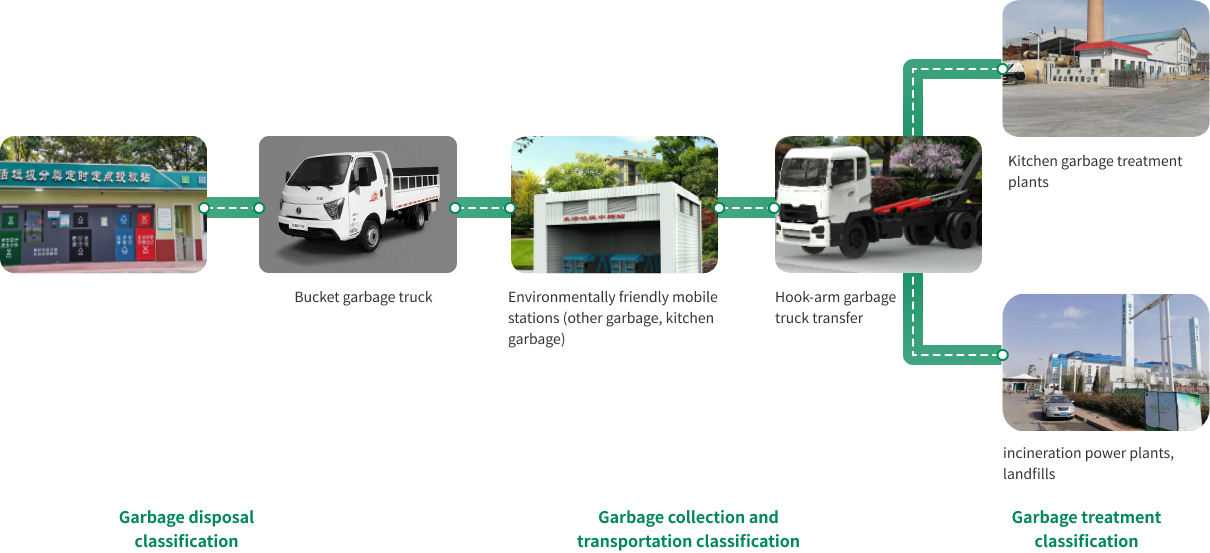-
Municipal garbage classifications
-
Transfer modes of rural garbage classification
-
Construction garbage collection and transportation modes
Equipment Matching Process
We relentlessly pursue operating cost reductions for you!
-
Customer In-Depth Analysis
Professional engineers analyze the customer's current or future operation, such as number of households, availability of labor, waste treatment requirements and transportation distances.
-
Classification and Layout
Scenarios are classified and project requirements are reviewed and confirmed.
-
Equipment Matching
Chassis and equipment are selected to meet the customer needs at the lowest possible operating and capital cost.
Municipal garbage classifications
Transfer modes of municipal garbage classifications (four classifications)

Garbage classification and transfer mode for narrow urban communities [Transfer station model - suitable for communities with large populations and garbage volume that are located far away from the power plant (over 20km)]

Garbage classification and transfer modes for narrow urban communities [Direct vehicle collection mode - suitable for communities with small populations and garbage volume that are located close to power plants (within 20km)], with existing vehicles used as other garbage collection vehicles

Transfer modes of rural garbage classification
Two classifications. Reason: Relatively low levels of recyclable and hazardous garbage in rural areas

Construction garbage collection and transportation modes

Smart sanitation platform
The next step
Please feel free to reach us to discover more opportunities together!






